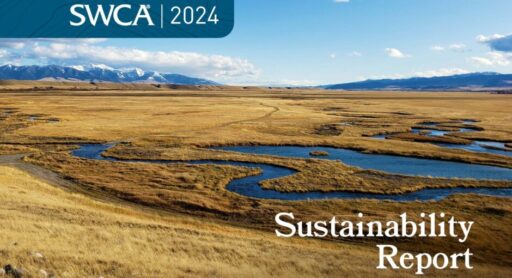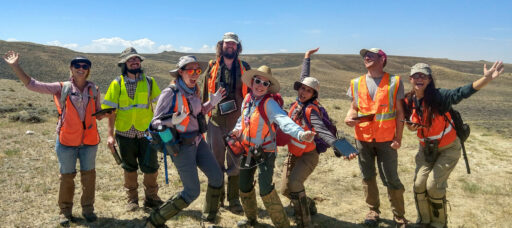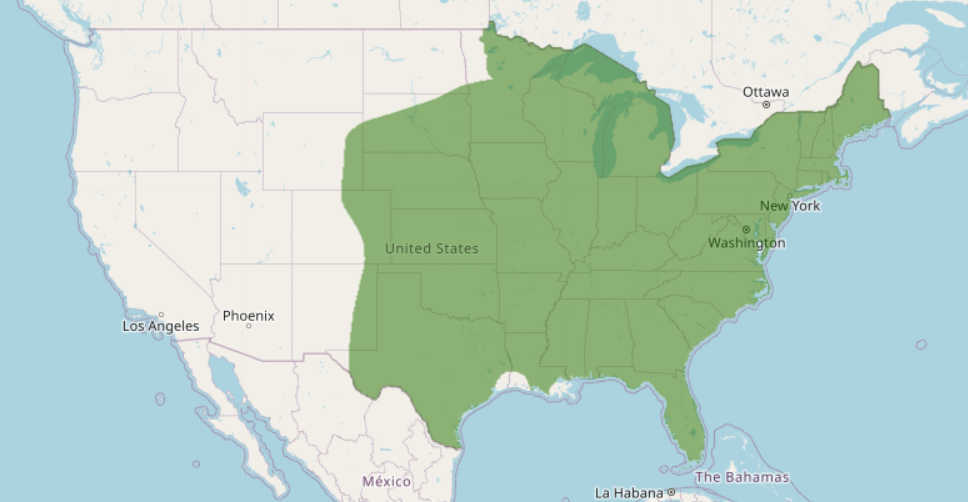2025
Comparably’s Best Company Outlook
* Providing engineering services in these locations through SWCA Environmental Consulting & Engineering, Inc., an affiliate of SWCA.

From the experts we hire, to the clients we partner with, our greatest opportunity for success lies in our ability to bring the best team together for every project.
That’s why:

At SWCA, sustainability means balancing humanity’s social, economic, and environmental needs to provide a healthy planet for future generations.

SWCA employs smart, talented, problem-solvers dedicated to our purpose of preserving natural and cultural resources for tomorrow while enabling projects that benefit people today.

At SWCA, you’re not just an employee. You’re an owner. Everyone you work with has a stake in your success, so your hard work pays off – for the clients, for the company, and for your retirement goals.
USFWS Proposes Endangered Status for Tricolored Bats
Amanda Glen is SWCA’s natural resources technical director for biological services and provides strategic guidance on permitting and compliance for matters involving protected wildlife, plants, and habitats. Currently managing a national practice, she has more than 25 years of consulting experience with an emphasis on the Endangered Species Act (ESA) and how compliance with the ESA influences other regulatory programs. Her wealth of experience pertaining to endangered species issues includes research, permitting, consultations, status reviews, and conservation planning. Her experience includes negotiating compliance solutions for critically imperiled species facing potential determinations of jeopardy or adverse modification of designated critical habitats. She has led efforts to delist species no longer requiring the protections of the ESA when supported by sound science, and has been involved in voluntary conservation planning to help preclude the need to list species. Amanda frequently presents at regional and national conferences on matters related to the ESA, including new listings, regulatory and policy changes, and trends in compliance strategies.

Drew is one of SWCA’s Midwest lead project managers specializing in renewable energy projects and Endangered Species Act compliance. He is a federally permitted bat biologist with 16 seasons of field survey experience.



The U.S. Fish and Wildlife Service (USFWS) proposed listing the tricolored bat as endangered under the Endangered Species Act. The proposed rule cites white-nose syndrome as the primary factor influencing the species’ viability, followed by deaths at wind farms, habitat loss, and effects from climate change. The tricolored bat is a relatively common, but declining species, that ranges across the eastern United States These bats use forested habitat during the summer and hibernate in caves, mines, culverts, and other subterranean features during the winter.
While tricolored bats share some life history characteristics with currently listed bats (i.e., Indiana bats and northern long-eared bats), they also differ in notable ways. For example, tricolored bats may be more commonly found in cracks and crevices of bridges, culverts, and other human-made structures. Further, tricolored bats are more likely to roost in foliage of live trees rather than dead and dying snags which are favored by Indiana bats and northern long-eared bats.

Tricolored bat range. (USFWS)
If the listing is finalized as proposed, the tricolored bat would receive full protection under the Endangered Species Act. Activities that would directly or indirectly kill, wound, or injure tricolored bats would require authorization from the USFWS.
USFWS is accepting comments on the proposed listing rule through November 14, 2022. Comments may be submitted at www.regulations.gov or by mail (see website for further detail). The USFWS will be hosting a virtual public information meeting and hearing on October 12, 2022. More information can be found at Tricolored Bat (Perimyotis subflavus) | U.S. Fish & Wildlife Service (fws.gov)
The USFWS also prepared a brief video describing the species, the proposed rule, and the listing process at Tricolored Bat Proposal to List as Endangered Recording – YouTube.
It generally takes a year to transition from a proposed rule to a final rule. SWCA’s bat biologists and Endangered Species Act compliance teams are ready to help you understand how this listing may affect you and your projects. Please reach out today if you find yourself in need of assistance with USFWS coordination, submitting comments, evaluating risk of incidental take, conducting surveys, or preparing new compliance strategies.